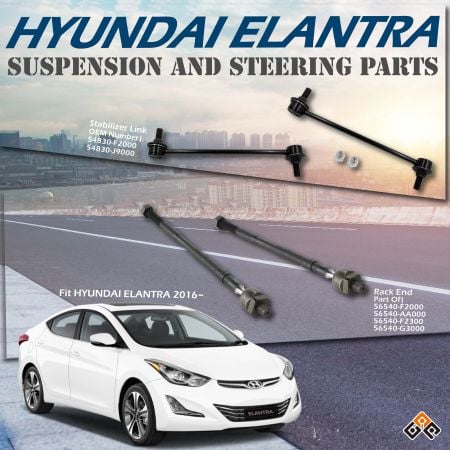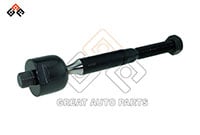What Causes Tie Rods to Wear Out Quickly?
What Are Tie Rods and What Do They Do
Tie rods are the connectors between your steering rack and wheels. The inner ones are attached to the rack, while the outer ones hook up to the steering knuckle. They’re the reason your wheels move in sync when you turn the steering wheel.
If they’re worn out, your steering feels sloppy. You might notice uneven tire wear, weird noises when turning, or your car pulling to one side. In extreme cases, steering can fail completely. Yeah, scary stuff.
Why Do Tie Rods Wear Out So Fast
There are a lot of reasons why tie rod tie wear happens faster than it should. Here’s a breakdown:
| Cause | Impact on Tie Rods |
| Rough roads | Potholes, gravel roads, and uneven terrain beat up tie rods over time. |
| Rust and corrosion | Rain, snow, and salted roads cause rust, weakening the metal. |
| Lack of lubrication | Dry joints lead to friction and faster wear. |
| Low-quality parts | Cheap tie rods can’t handle the stress of daily driving. |
| Aggressive driving | Hard stops, fast turns, and overloading the car wear out tie rods quickly. |
Treat your car rough, and your tie rods will give up even faster.

What Are the Symptoms of Tie Rod Tie Wear
Noticing your car acting weird? It might be your tie rods. Here’s what to look for:
- Wobbly steering:
The wheel feels loose or unsteady. - Clunking noises:
You hear banging or knocking when you turn. - Uneven tire wear:
One side of the tire looks bald while the other is fine. - Car pulls to one side:
Steering feels misaligned. - Quick Test:
Jack up the car, grab a front tire, and try wiggling it side to side. If there’s excessive play, your tie rods could be toast.
Can You Prevent Tie Rod Tie Wear
You can’t stop wear entirely, but you can slow it down. Here’s how:
| Tip | Why It Helps |
| Routine inspections | Spot small issues before they turn into big problems. |
| Lubricate regularly | Reduces friction and keeps the joints working smoothly. |
| Avoid rough roads | Protects your suspension and tie rods from unnecessary damage. |
| Drive smart | Easy on the brakes, avoid overloading, and don’t treat your car like a racecar. |
| Use quality parts | Durable tie rods last longer and perform better under stress. |
Preventive care saves money and headaches.

What Happens If You Ignore Worn Tie Rods
Ignoring tie rod tie wear isn’t just risky—it’s expensive. Here’s what could happen:
- Tires wear unevenly, costing you money on replacements.
- Steering gets worse, making it harder to control your car.
- Suspension damage, as the extra stress impacts other components.
- Worst case? Steering failure, which puts you (and everyone else) in danger.
If you think your tie rods are bad, don’t wait. Fix them.
What to Do If Your Tie Rods Are Worn Out
Here’s your action plan for worn-out tie rods:
- Inspect the damage:
Confirm they’re the problem (or have a pro check). - Replace them:
Don’t wait. Bad tie rods only get worse. - Get an alignment:
Keeps your tires from wearing unevenly and improves steering. - Use quality replacements:
Great Auto Parts has tie rods that last longer and perform better.
Don’t risk it. Replace bad tie rods as soon as possible.
Why Choose Great Auto Parts for Tie Rods
Here’s why Great Auto Parts is your best bet:
| Feature | Why It Matters |
| Durable materials | Built to handle daily wear and tear, lasting longer than cheap options. |
| Low MOQs | Minimum order as low as 30 pieces—perfect for businesses. |
| Custom orders | Get parts tailored to your exact needs. |
| Trusted brand | Keeps downtime to a minimum. |
| Trusted brand | Known for reliable, high-quality steering and suspension components. |
How Do You Replace Tie Rods
Replacing tie rods isn’t too hard if you’ve got the tools and patience.
Step-by-Step Guide:
- Loosen the lug nuts and jack up the car. Secure it on jack stands.
- Remove the outer tie rod using a wrench or tie rod puller.
- Unscrew the inner tie rod, being careful not to damage the steering rack.
- Install the new tie rods and tighten everything securely.
- Get an alignment, because skipping this will mess up your tires and steering.
Pro Tip: Always compare the new tie rods to the old ones to make sure they match before installing.




